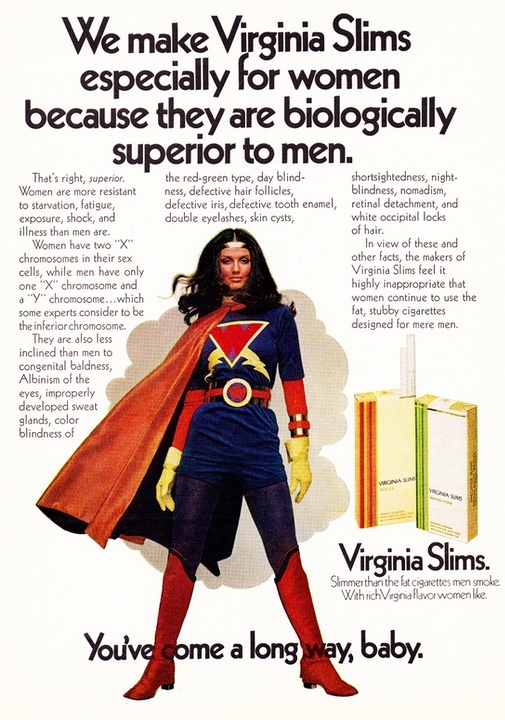Reportedly, Colorado may soon become the first state to require warning labels on gas pumps.
The warning labels are at the core of House Bill 25-1277, which narrowly passed the Colorado House of Representatives on April 2 and was scheduled to be heard in the Senate’s Transportation & Energy Committee.
We can wonder how effective warning labels are. In general.
About six months before I was born back in 1964, the Surgeon General of the U.S. Public Health Service — Luther L. Terry, MD — released the first report from the Surgeon General’s Advisory Committee on Smoking and Health. On the basis of more than 7,000 articles relating to smoking and disease available at that time in the scientific literature, the Advisory Committee concluded that cigarette smoking was causing lung cancer and laryngeal cancer in men.
And maybe also in women. But the Surgeon General wasn’t sure about the effects on women.
The scientists who published the 7,000 articles had focused on studying men, for whatever reasons. We can speculate on the reasons. Mainly, Virginia Slims hadn’t yet hit the market, even though women had already come a long way, baby… what with finally getting the right to vote and everything else.

Many people were unaware that females are biologically superior to males, until the Leo Burnett Agency began working on the Virginia Slims advertising campaign.
At any rate, the U.S. Congress had passed the Federal Cigarette Labeling and Advertising Act in July 1965, requiring that all cigarette packs include the statement “Caution: Cigarette smoking may be hazardous to your health”. Even Virginia Slims had to include the warning label, despite the fact that we didn’t yet know if cigarette smoking was dangerous to females. Considering the biological superiority of the female species, it was considered possible, in 1964, that women could continue smoking without any ill effects.
Since the warning labels appeared on cigarette packages, the percentage of smokers in the American population has dropped from 42 percent of adults to about 12 percent. (Or about 15 percent, if we include e-cigarettes, but those people are not technically “smokers” because e-cigarette don’t actually burn.)
American males are slightly more likely to be smokers (13%) than women (10%). And women’s cigarettes, like Virginia Slims, are more dainty.
But what I really wanted to write about this morning was HB25-1277, which is sponsored by three female legislators: Rep. Jennifer Bacon, Rep. Junie Joseph, and Senator Lisa Cutter.
As far as I know, the Surgeon General of the U.S. Public Health Service has never actually determined that pumping gasoline is hazardous to my health. Which may explain why I don’t yet see warning labels on gas pumps. (I don’t own an electric vehicle. And I certainly would not buy a Tesla, the way things are going.) But we might finally have warning labels in Colorado, soon.
The warnings — if approved by the Colorado Senate and signed into law by Governor Jared Polis — would say:
WARNING: Use of this product releases air pollutants and greenhouse gases, known by the state of Colorado to be linked to significant health impacts and global heating, respectively, pursuant to section 25-5-1603, C.R.S. Tampering with this label is a violation of section 18-4-510, C.R.S.
I think the “tampering” part of the law is a really smart addition. I can imagine a lot of guys peeling the labels off the gas pumps while they are waiting to finish filling up their pickup trucks. Even an occasional female might be tempted to peel off the label.
The more important question, though, is whether these warning labels will cause people to stop pumping gas.
As we saw with the cigarette warnings, the number of Americans smoking cigarettes did in fact drop significantly after the warning labels were implemented. The U.S. had a population of about 196 million in 1965, and about 42 percent were smokers. That’s about 82 million smokers. By 2024, the number of tobacco users had dropped to about 50 million (including e-cigarette and vaping users) even though the nation’s population has greatly increased.
Even the Leo Burnett Agency couldn’t stop the decline.
But pumping gasoline is not the same as smoking cigarettes. (Note: you should never smoke a cigarette while pumping gasoline. But that’s obviously become less of a problem.). So we need to know if any scientific studies show women pumping gas at the same frequency as men.
When I did a Google search — “Do men pump more gas than women?” — I was served a whole bunch of links to websites discussing intestinal gas.
Meanwhile, the AI apps ‘Claude’ and ‘ChatGPT’ suggested that women are just as likely to pump gasoline as men. But there are differences. The woman is more likely to completely top off the tank, and is also more likely to fill up before the gas indicator gets down to “E”.
But the man is filling up a Toyota Tundra, and the woman is filling up a Honda Civic.
I didn’t ask which gender is more likely to peel off the warning label, because HR25-1277 isn’t yet a law.
Underrated writer Louis Cannon grew up in the vast American West, although his ex-wife, given the slightest opportunity, will deny that he ever grew up at all. You can read more stories on his Substack account.

